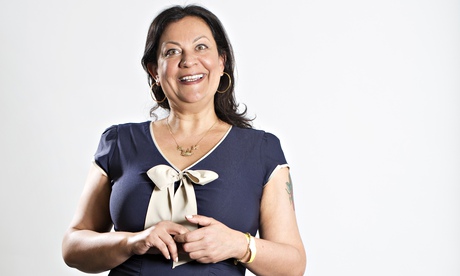
Some readers might feel that, at 48, India Knight is too much of a spring chicken to be let loose on the subject of middle and old age. Should she not have had the tact to wait until she hit 50, often a turning point for women, before getting started? But like a boy scout, she believes in being prepared, writing her way into a future, hoping to discover that ripeness is all – or that overripeness need not be a disaster. And what she succeeds in doing is to tread, with flamboyant showmanship, a fine line between acknowledging the difficulties attendant on middle age – not ducking out of writing about the menopause (taboo subject), the unravelling of marriages and the challenges of looking after antique parents – without turning her book into a downer. And this is an achievement because the risk of writing about grim – or even geriatric – subjects in an upbeat way is that the more resolutely perky your stance, the more likely it is that they will sneakily turn grimmer behind your back.
There is india-rubber in India – bouncing back is second nature. Reading this book is like sitting at a kitchen table having a rumbustious, hilarious, informative conversation where it does not matter if you disagree. She often made me laugh aloud. The book has been published in a playfully undemanding style, as if for an infant, which I liked. It is a noisy book, a conversation with sound effects, full of exclamations. She confesses that she goes “Ooof” when she sits down, “in a really satisfied way”, and likes getting into bed so much she groans with pleasure: “Woooargh.” This writing is never mousy.
The intended audience is female and in her chapter “What to wear – or what not to wear, and the fear of mutton” she has a spot-on instinct for dividing middle-aged women into types and for dispensing advice. She prohibits beige – she is an anti-buff buff. She denounces the old black that “looks absolutely awful on almost everyone”. The new black is navy. But she is going to have to work harder to convince me that leopard-skin print is the new “neutral”.
There is a great moment, in a subsequent chapter, in which she asks why Warning, Jenny Joseph’s 1961 poem about “wearing purple”, remains our only quotable defence against decrepitude with its clapped-out message about mutinous pottiness and growing old disgracefully. It is time, she rightly asserts, to move on. Having said that, she is not averse to purple herself, though “I’m not advocating top-to-toe colour, because then you might run the peril of looking WHACKY, which as far as I am concerned is simply the pits”.
Colour, teeth and feet – these are a few of her favourite things. She writes especially convincingly about the importance of looking after the latter two. And I relish her non-PC insistence that women need to be aware that, if we give up on our appearance (and it is not that she thinks we have not every right to choose to do so), it is unreasonable to expect men to approve.
It’s annoying me that this feels like a controversial, maybe even unfeminist thing to write. But come on. Come on. Everything cuts both ways: would you be cool if your partner suddenly developed one of those paunches that made him look like a heavily pregnant egg, stopped cutting his toenails, grew a massive mujahideen beard and sat around farting like a horse, saying: “You know what, I really like myself this way, I feel so authentic and great”?
The book is full of tips, links, puffs – for her physiotherapist, for carers, for the surgeon who lasered her eyes, for a Swedish dress shop, for personalised trainers, goose-down pillows, and widescreen TVs. And all this is fine – as long as your purse is deep. But for many people, the Vi-Spring bed (cited as a necessity) will have to stay a luxury. And having your eyes lasered (“My surgery cost £4,150 for both eyes: you can pay in instalments”) might prove too eye-smartingly expensive to prompt a mass exodus in the direction of London’s Moorfields hospital. What the book does reinforce is that money, especially in middle age, is a balm. In 2008, Knight wrote a book about thrift. This is no sequel.
“Eighty per cent of looking good is confidence.” “Talking solves most things, eventually.” “Embrace change, it is your friend.” She is not afraid of comforting platitudes – the verbal equivalent of bedroom slippers – and I enjoyed her comforting approach and her zippy readability at every turn. But the book does raise the question of whether a close study of self is not, after all, a losing game. A brief (far too brief) chapter, “Living well”, champions the joys of pottering, theatregoing and dog ownership. And while I relate to all of the above, I could not help feeling she incompletely makes the case for looking outwards – the only sure route to making growing old a non-issue.
In Your Prime is published by Fig Tree (£16.99). Click here to buy it for £13.49

